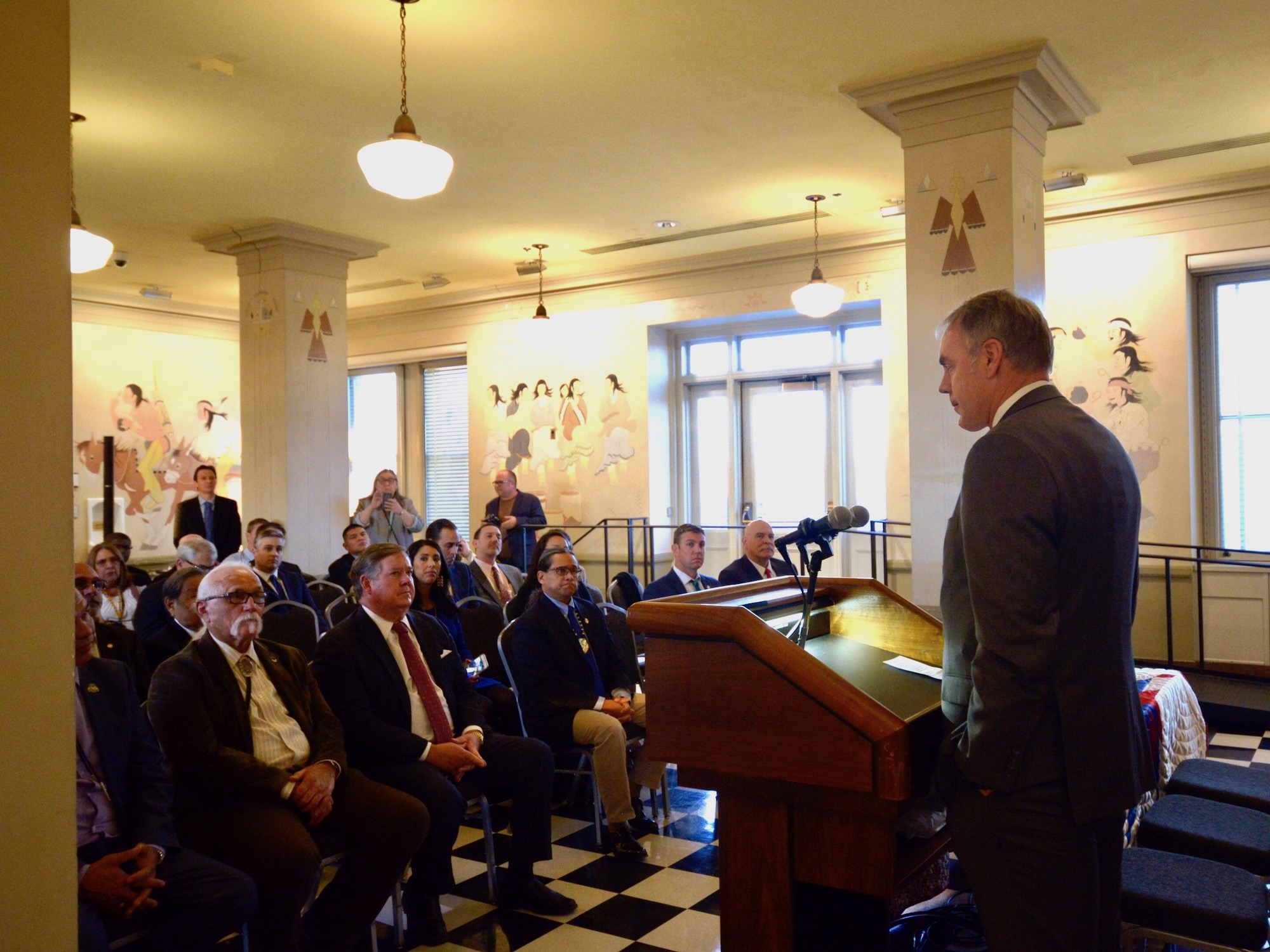
Zinke has indeed taken action, in the department's words, to change a "culture" that has at times seemed tolerant of abusive behaviors. Much of the focus has centered on the NPS after female employees reported being repeatedly mistreated by their male counterparts at places like Grand Canyon, where several people have been fired in recent months. Some higher-ranking officials have been prompted to retire after facing allegations. The BIA has seen its share of problems too. An employee in Arizona repeatedly harassed citizens and employees of the Colorado River Indian Tribes by sending them "sexually explicit" messages via text message and on social media, the Office of the Inspector General reported in October. Despite being repeatedly told about the harassment, "BIA supervisors did not discipline the employee even though they knew his actions, which were substantiated in our separate investigation, damaged the BIA’s reputation, undermined the trust of local tribal members, and negatively affected his coworkers," a summary of the report stated. The employee in question finally resigned in May, after subjecting the CRIT community to abusive behavior for two years, according to the report. The BIA was told to explain how it was handling sexual harassment by the end of this week -- an agency spokesperson on Thursday said the response was still in progress. But the tribe said the BIA didn't take action until they approached higher-level officials. "They failed to address those issues until raised by the tribal council with higher level officials within the Bureau of Indian Affairs. We appreciate the efforts of the OIG and hope the results of their report will effectuate real change within the BIA," the tribe said in a statement following the public release of the report.
In a second example, a BIA employee was hit with a complaint about misusing his government computer. He admitted he viewed "pornographic" websites while on the job, the Inspector General said in an August report. When asked about the employee, BIA spokesperson Nedra Darling said she did not have information about his status. But she said agency officials have been working address concerns raised in the OIG's recent reports. "They've been moving progressively on those two" reports, BIA spokesperson Nedra Darling said. According to the Workplace Environment Study, employees at the BIA, the OST and the NPS reported the highest rates of sexual harassment on the job. OST's rate, 11.40 percent, was even higher than that of the NPS, 10.40 percent. Racial and ethnic harassment were the highest at the OST, 24.80 percent, followed by the BIA, 20.30 percent. The rates far outpaced any other at Interior -- a situation that appears to be linked to the high percentage of American Indians and Alaska Natives who work at those particular agencies. According to the survey, 85.3 percent of BIA employees are Native. Of those who participated in the survey, 78.9 percent are Native.If you are an Interior employee who has faced discrimination or harassment, visit https://t.co/L5w6x4Rnqt for employee resources. https://t.co/3b58csEJp8
— US Department of the Interior (@Interior) December 14, 2017
The survey doesn't explain the nature of the racial and ethnic harassment at the BIA or at the OST, where 76.9 percent of employees are Native. It only shows whether employees experienced such harassment. At the BIA, however, the data shows that non-Native employees are more likely to experience racial and ethnic harassment. At the OST, the rates among Native and non-Native employees were about the same. “Intimidation, harassment, and discrimination are viruses within an operation, and have no place at Interior,” Deputy Secretary David Bernhardt, the number two in command at Interior, said in a press release. “This is the start of a culture change in IA, BIA, & BIE. I am honored to join @SecretaryZinke & our employees in this effort,” John Tahusda, the Principal Deputy Assistant Secretary for Indian Affairs, added in a post on Twitter later on Thursday. The BIE stands for the Bureau of Indian Education. Office of the Inspector General Reports:The Supplemental Statistical Report on the Bureau of Indian Affairs for Jan - Mar 2017 is available at https://t.co/AzAyuQcWKs.
— Indian Affairs (@USIndianAffairs) December 14, 2017
“This is the start of a culture change in IA, BIA, & BIE. I am honored to join @SecretaryZinke & our employees in this effort.” – Acting AS-IA Tahusda https://t.co/0ofdeaLODo
Insufficient Actions by BIA Management and Human Resource Officials in Response to Sexual Harassment Reports (October 18, 2017)
BIA Employee Visited Pornographic Websites on His Government Computer (September 20, 2017)
BIA Employee Sent Unwanted, Sexually Explicit Messages (June 5, 2017)
Join the Conversation

